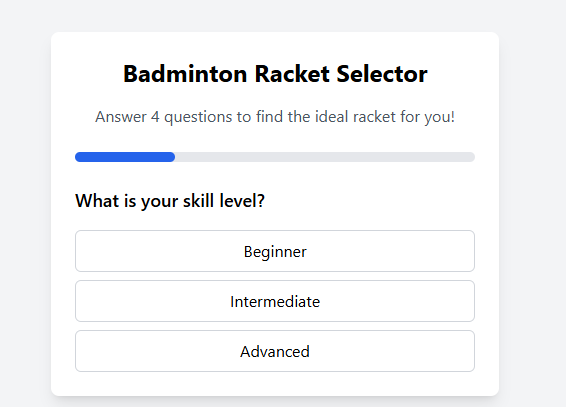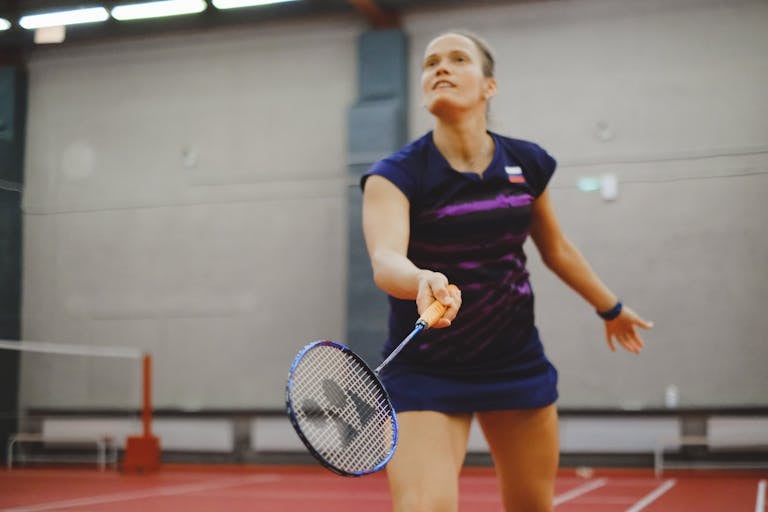Stamina for badminton refers to how long a player can sustain fast play without decelerating. Strong stamina enables players to get around the court fast, return pull shots, and keep their wits during grueling matches.
There are a lot of things that form stamina, such as consistent training, nutritious meals, and sufficient sleep. Players at all levels can develop stamina with consistent practice.
To assist you in improving, this brief guide breaks down the essential advice and simple steps for building stamina for badminton.
The Stamina Blueprint
Stamina is the glue of badminton. It’s more than outlasting opponents in long rallies—stamina in this sense means managing quick transitions and sudden shifts in direction, sudden bursts of footwork, and power. A hands-on blueprint spanning cardiovascular, interval work, agility, strength, and sport-specific drills.
A smart routine slides into any schedule and is performable at home with minimal equipment.
1. Cardiovascular Base
Regular runs, long and short, build heart and lung strength. Jog 3-4 times a week, about 30 minutes each, to sustain progress. For everyone else who wants variety, cycling is the way to go. It’s gentle on the joints, and yet it still exercises the heart and lungs.
Incorporating sprints into your jogging—e.g., 30 seconds at full-out effort every couple of minutes trains the body to recover quickly, akin to between points in badminton. Heart rate monitors can inform you of how hard you’re working.
For many, maintaining heart rates in the 60%–80% max range produces optimal results. Sprinkling in circuit training, such as jump rope or plyometric moves, keeps your workouts unpredictable and avoids plateaus.
2. Interval Training
Short, high-effort bursts followed by rest replicate match play. Shuttle runs and burpees, whilst simple, are highly effective. Test 20 seconds of work, then 40 seconds of rest — for 15–20 minutes total.
HIIT workouts (like sprinting or jump squats) push speed and stamina. Play with different interval lengths to discover what works for you. Rest is key.
Give yourself at least one day per week off to repair muscle and prevent injury. Just crank up the intensity over the weeks and months to avoid burnout. It takes weeks, not days, to build stamina, so slow and consistent wins the race.
3. Agility Drills: Ladder drills assist with foot speed. You can lay out a ladder on the ground and travel through the squares as fast as you can. Cone drills enhance your ability to change direction under control, a key physical trait for dominating the court.
Shadow badminton, performed without a shuttle or partner, allows you to concentrate on movement and reaction. Reaction balls are great for tuning up reflexes.
These drills can be performed in small spaces and with very little gear.
4. Strength Training
Pleg work, such as squats and lunges, develops power for explosive steps and jumps. Planks and core work maintain balance powerfully when moving in every direction. Resistance bands are great for those smaller muscle groups and provide variety to workouts.
Keep strength training, two or three times a week.
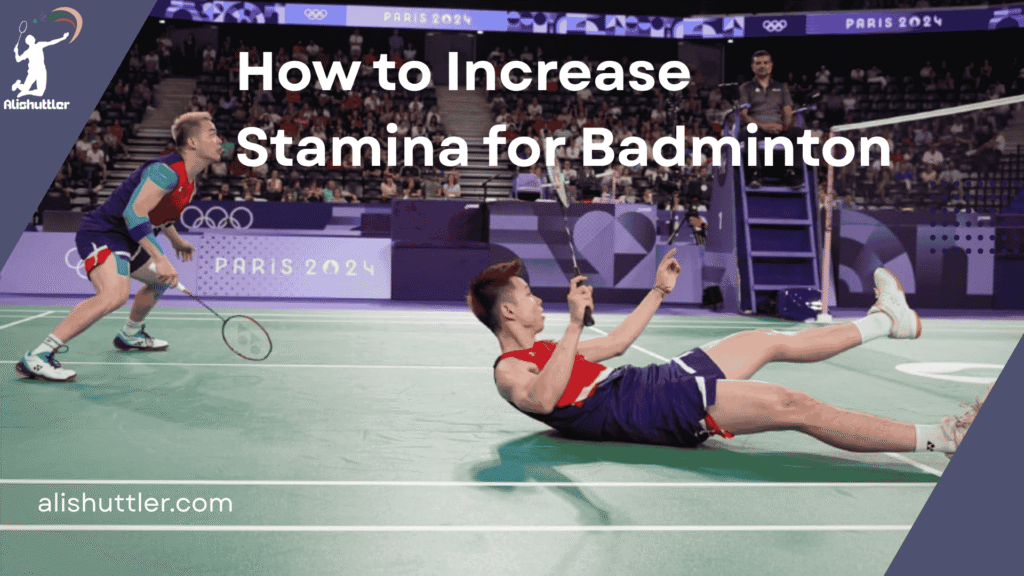
Singles vs. Doubles
Singles and doubles both push a player’s stamina, but in different ways. How you train for each should correspond to the game’s requirements and your role on the court. Singles places a single player on each side. Doubles divides the court in half between two players on every team, each with a task to perform. Both request endurance, but what it means to endure in one isn’t the same as in the other.
PP PSingles are tests of endurance. Rallies can drag on, with players required to cover each inch of the court on their own. Long runs, split steps, and sharp turns are commonplace. It is not simply speed, it is the necessity to maintain a cadence and regulate the breathing for minute after minute.
Footwork drills, interval runs, and shadow play tick off the singles players’ base-building. Your positioning has to be crisp. A player who arrives at shots with less wasted motion conserves energy for the long run. Shot selection is important as well. Smashing or pushing shuttles deep or to corners can tire an opponent, letting you win points through fitness as well as skill.
In singles, defense is not just about quick hands–it’s about smart feet and positioning.
Doubles changes everything. The court is the same size, but now two players occupy the space. The pace of play escalates. Reflexes get tested more since the shuttle returns more quickly. Double pairs have to understand who takes what. If both play singles style, they trample each other and fall behind quickly.
Great doubles are cultivated through teamwork practice. Communication helps avoid clashes, and smart rotation keeps the court covered. Teams need to recall service rules. Either side has to keep score of who serves and which side.
Doubles drills emphasize net play, drive exchanges, and quick transitions. Working with your partner’s strengths is the key. One player’s solid smash can be established by the other’s sneaky lifts or drops. Each shot influences not just you, but your partner as well, so there’s more on the line with every play.
A unique point: in a two-versus-one match, the solo player sometimes has an edge if the doubles side cannot work as a team. Coordination and rotation are many times harder than stamina by itself.
Fueling Endurance
Badminton stamina is the combination of solid workouts, including endurance drills, intelligent nutrition, and consistent hydration. HOW and WHEN you fuel your body is just as important as WHAT you eat. By planning meals and snacks around badminton training, selecting foods that help energy endure, and adjusting these selections based on how your body feels, you can make a significant difference in how long and how well you play.
Nutrient Timing
Proper fuel is essential for Stamina for Badminton training. A balanced meal with slow-burning carbs and some lean protein before a match ensures your energy won’t burn out during marathon rallies. While white rice and white bread give you a fast kick, they fizzle halfway through. Foods like oats, sweet potatoes, or whole-grain bread digest more slowly and aid energy endurance, which is crucial for building endurance during long gameplay.
Snacks such as bananas, trail mix, or yogurt during training for Stamina for Badminton plug gaps and maintain steady sugar levels. After a game, consuming protein and some carbs like chicken with rice or eggs with toast boosts muscle recovery and supports overall endurance. Certain foods will work better for you than others, so test a couple before, during, and post training.
Keep note of how you feel and how you play. If you experience fatigue too early, switch what or when you eat to optimize your stamina training and improve your performance as a badminton player.
Hydration Strategy
Drinking water all day not just before play keeps you hydrated and helps your body work right. For hot or extended sessions, sprinkle in some salt OR use a sports drink to assist in replenishing salts lost through sweating.
Get in a routine of drinking before, during, and after matches. Clear urine is a fast test for proper hydration. Some find they do best sipping water frequently, while others prefer to drink larger amounts less often. Discover what keeps cramps and fatigue at bay.
Tournament Fuel
A food and snack plan on tournament days prevents energy crashes. Meals with brown rice, whole grains, or beans provide consistent energy. Munch on fruit or nut bars between matches if you need a quick hit.
Test out tournament foods in practice first to prevent tummy issues! Allow ample time to digest; eating too close to play can cause ‘stomach pangs’. Your fueling plan should shift if matches stretch longer or tighter together than anticipated.
Endurance Training and Practical Tips
Stamina for Badminton endurance is constructed with more than just running. Skipping, particularly double skips for a minute and single skips for half a minute, quickens feet and increases endurance. Circuit training, short spurts of varying moves and rests, teaches the body to endure longer.
Not all off-court exercises beat up your joints. Cycling is a great low-impact choice. When you add new drills, scale up time and effort incrementally to reduce injury risk.
Recovery Protocol
Delivering good stamina on the Stamina for Badminton in court relies heavily on a balanced recovery protocol, which is as crucial as Stamina for Badminton training itself. This approach minimizes injury risk, promotes muscle repair, and keeps athletes primed for sustained competition. By mixing active and passive recovery, adjusting routines to fit individual needs, and monitoring progress, there’s much that contributes to a comprehensive recovery strategy.
Active Recovery
Light jogging, fast walking, or yoga on rest days keeps blood moving and muscles healing. They reduce the likelihood of next-day soreness and stiffness, allowing you to keep moving. Tossing in dynamic stretches, arm circles, leg swings, and easy lunges keeps joints loose and fibers supple. This helps prevent injuries from tight muscles and supports the range of motion necessary for badminton’s fast plays.
P.S. Scheduling consistent active recovery sessions, like swimming or gentle cycling, provides your body a respite from intense workouts but still encourages fitness. For some, foam rolling post such sessions assists in softening tight spots and accelerating the recovery to feeling 100%.
Sleep Quality
Sleep is a fundamental pillar of recovery. Most adults require closer to 7-9 hours for muscle repair and mental reset. A few players experiment with shorter rests, but many discover that 6 hours is insufficient to be at your best or to sustain you, even with the assistance of an alarm clock.
A consistent bedtime ritual, same time, lights low, no screens, serves that good sleep hygiene. Tracking sleep via an app or journal helps identify patterns and adjust habits. Good sleep ensures that your reaction time remains sharp and your stamina stays steady, both essential for long rallies and matches.
Periodization
Periodizing a training plan for Stamina for Badminton breaks the season into blocks, interspersing high and low-intensity sessions. This keeps your training for Stamina for Badminton fresh and allows your body to recover. For instance, following a sequence of challenging matches or workouts, a lighter week allows muscles to recover and adjust.
By limiting your weekly Stamina for Badminton training increases to 10% or less, you’re giving your body time to adjust slowly. Tracking progress, whether with notes, apps, or coach feedback, allows athletes to respond quickly to symptoms of fatigue or overtraining. This way, you avoid burnout, plateaus, or lingering soreness that can sap your endurance.
Nutrition and Other Recovery Methods
Sports drinks are probably most useful during workouts lasting over an hour, or during sprints. Logging your meals and beverages with an easy-to-use app assists with managing nutrient balance for recuperation. Protein within 30 minutes of play can help muscle repair, particularly after long rallies or intense training.
Cold water baths can help certain types of athletes feel fresher after hours on the court. Stretch daily, particularly following matches, to maintain muscle flexibility and reduce injury risk.
Mental Fortitude
Mental fortitude is a backbone for enduring stamina in badminton. It spans the skills and habits that keep players shrewd, cool, and focused, even in fraught moments. Developing mental fortitude is as crucial as physical conditioning.
Hundreds of elite athletes employ these mental implements to maintain their competitive edge in competition, increase their stamina, and manage anxiety.
Focus Drills
Concentration is not merely about presence; it’s about persistence. In practice, players can employ drills that compel them to block out external noise, e.g., play with background music or have somebody shout random words.
This helps train the mind to tune out distractions during big matches. Another way to cultivate focus is by determining specific objectives for every practice session. For instance, a player can concentrate on their mind being on each shot, rather than the score.
A few minutes of reflection after each session can reveal what went well and where your focus drifted. These steps help players recognize their mental fortitude and what to work on next time.
Positive Self-Talk
Positive self-talk isn’t just saying, “I can do it!” It means employing sincere, empowering language to foster genuine assurance. A lot of players begin by chanting little pre-game mantras.
This habit can help calm nerves and establish the right mood. When negative thoughts intrude e.g., ‘I always lose close games’ players can shift to helpful verbiage, like ‘I’m ready for this challenge’.
Sending inspiring quotes or words to your teammates can unite the group and fortify all with positivity. Being mindful that mindset molds performance keeps players attuned to their attitudes, so they can remain positive even when things fall apart.
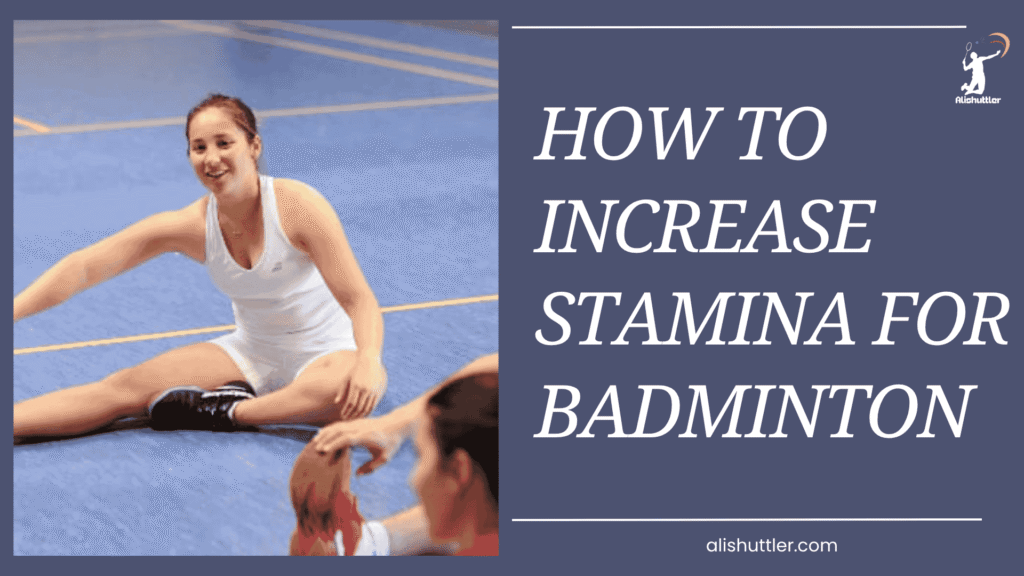
Visualization
Visualisation is seeing success in your mind, one step at a time. Athletes, for example, might visualize themselves serving an ace or running a difficult shot to the net. This mental rehearsal is more than wishful thinking; it helps the brain acclimate to operating under high pressure.
Before matches, for example, players would sometimes shut their eyes and mentally visualize each phase of the game visualizing themselves remaining focused, reacting quickly, and maintaining their composure for Stamina for Badminton.
Repeated visualization, over time, cultivates mental fortitude, helping you stay locked in during extended rallies or critical match-points.
Mindfulness and Breathing
Mindfulness means being present, not getting caught up in anxiety or past flubs. Even short meditations done each day can help players reboot and be prepared for practice or games.
Concentrating on slow, deep breaths is an easy method to tame anxiety and remain present, regardless of the score. Others employ breathing hacks mid-matches to tame nerves.
It clears the head and makes the body respond with more grace. Mental fortitude compounds, and these micro-habits add up to grand slams when the game is on the line.
Tracking Progress
Progress tracking is crucial to building endurance for Stamina for Badminton. It’s not simply about playing more; it’s about understanding what’s effective, where you can improve your skills, and how to continue progressing. Journaling, goal setting, and data tracking are simple steps that allow you to experience results and maintain motivation.
Wearable Data
Fitness trackers and smartwatches reveal more than steps. They record heart rate, calories burned, and recovery time. This information allows you to identify patterns in your practices and competitions.
For instance, if your heart rate remains elevated for extended periods following a grueling drill, you may need to reconsider your rest or nutrition. A lot of players use this data as benchmarks. You may track how rapidly your heart rate decreases post-sprint, or how many meters you cover per session.
Others allow you to compare this week’s numbers to last month’s. Over time, these incremental shifts reveal true endurance and Stamina for Badminton growth. This tech isn’t just for power users; anyone can use it to discover what is making an impact.
Performance Metrics
The KPIs assist you in tracking endurance and conditioning in a transparent fashion. You can track match endurance by counting how many rallies you complete before fatigue or timing how long you can hold out at an even pace on court.
A lot of people like to count how many shots you can hit in a row without a miss; if you miss, reset to zero. This simple challenge cultivates focus and endurance. Other helpful metrics are shot accuracy and reaction time.
Track how many shots hit the bullseye, or time split-second motions with a stopwatch. These figures can turn into practice targets. For instance, aim for 30 error-free shots in a row, or cut a second off your quickest court sprint.
Track what’s working with notes after each session. If your progress stalls, mix up your drills or training load. This maintains consistent growth.
Training Journals
Your training journal for Stamina for Badminton is one of the easiest ways to witness your progress. Record every session drill, score, and how you felt. This can be as specific or general as you want.
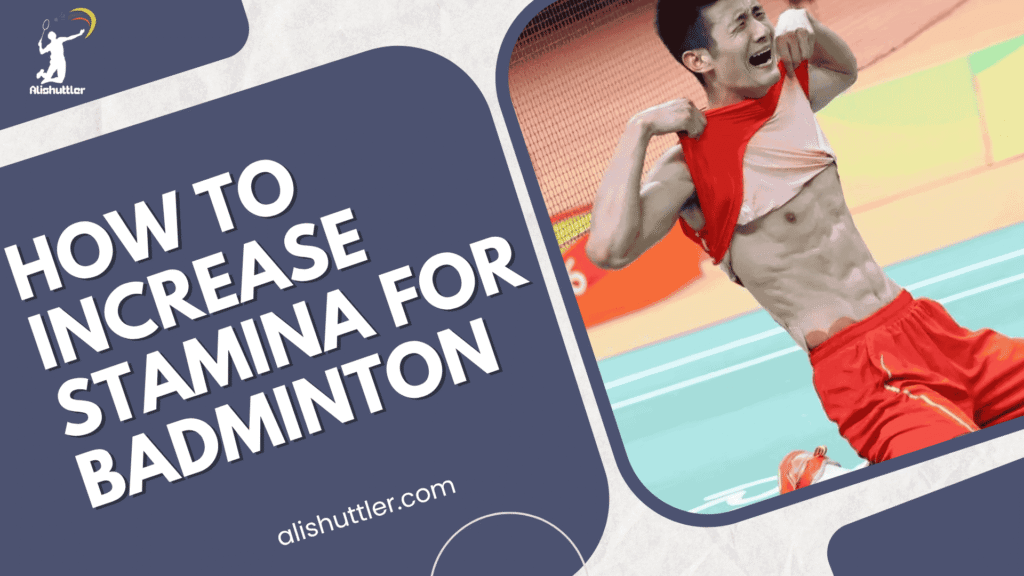
Other players track how many courts they sprinted one, two, up to four or how many intervals they completed at 80–90%. Tracking rest and nutrition helps as well, particularly if you connect it to how energetic you were during hard sessions.
Goal Setting
Make your goals specific and measurable. You could target a training day count for the month, or to finish a new endurance drill without breaking.
A lot of players invent micro-challenges, such as completing a certain number of exercises or beating their record for court coverage. For others, just marking how they feel after each session is sufficient to recognize improvement.
Final Thoughts
It requires consistent effort and intelligent habits to build up stamina for badminton. Each step consistent drills, intelligent nutrition, quality rest, mental acuity and rigorous logging improves your play. Singles have to run more. Doubles demand quick shots and rapid rotations. Nutrition and hydration keep your body prepared for those extended rallies. Rest allows your muscles to recover.
A strong mindset drives you forward when the match wears on. Tiny victories and regular reviews demonstrate to you what’s working. To keep yourself in the game longer, take a tip from here and stick with it. Have a story or a tip that works for you? Pass it forward and make the next player stronger, as well!
Frequently Asked Questions
How can I improve my stamina for badminton?
Steady aerobic activities such as running, cycling, or swimming develop physical stamina. Pair these with interval drills that replicate badminton’s quick bursts of movement for optimal badminton training results.
Is stamina more important in singles or doubles badminton?
Stamina training counts in both formats, but singles badminton players typically require more mental endurance due to longer rallies and increased court coverage.
What foods help increase endurance for badminton?
Consume complex carbohydrates, lean protein, and abundant fruit and vegetables to support your badminton training. Staying hydrated and opting for whole grains will fuel your muscles and maintain energy during long badminton matches.
How does proper recovery help boost stamina?
Rest, hydration, and stretching build back muscles and avoid injuries, enhancing overall endurance. Smart recovery habits make your body adapt and get stronger, preparing you for badminton training and boosting your energy for the next game.
Can mental strength affect stamina on the badminton court?
Sure, mental toughness and mental endurance training keep you on track and motivated. A good attitude provides badminton players the ability to break through fatigue and maintain consistency during difficult shots.
How do I track progress in badminton stamina?
Use a fitness tracker or app to monitor your heart rate and overall endurance during badminton training. Track how long you can play without flagging and watch yourself improve motivation!
What is the ideal warm-up for building stamina in badminton?
Begin with 5–10 minutes of light cardio and specific exercises like dynamic stretches. Specialized footwork drills enhance agility and build endurance for the game’s fast, rapid-fire sequences while keeping you injury-free.

